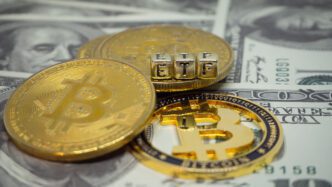The surge in copper prices has captured significant attention as they reached unprecedented levels in New York this week. Copper futures soared to a new high of $5.374 per pound before settling at $5.24 per pound on Wednesday, driven primarily by speculation over impending tariffs. Bloomberg’s report suggested that President Donald Trump is considering imposing tariffs on copper imports, a move that could reshape the market dynamics in the coming weeks.
Despite the absence of an official tariff announcement, the anxiety and anticipation have led to a 30% increase in copper prices this year, surpassing the 16% gain in gold and outperforming major U.S. stock indexes. The market’s response has been fueled by U.S. buyers scrambling to accumulate copper reserves amid uncertainty about future trade restrictions.
The implications of potential tariffs extend beyond just price hikes. Ole Hansen, head of commodity strategy at Saxo Bank, highlighted that copper, despite not being classified as a “critical mineral” by the U.S. Geological Survey, has been identified by the Department of Energy as a “critical material for energy.” Its widespread use across construction, electronics, energy, and defense underscores its importance.
In London, copper prices have also seen an upward trend, though not reaching the heights observed in New York. The divergence between the two markets, with New York futures now trading at a 17% premium, marks a departure from their usual synchronized movement. Hansen noted that this shift underscores the disruptive impact tariffs have on normal market behavior.
Mercuria, a commodities giant, estimates a substantial increase in copper shipments to the U.S. this month, with projections of 500,000 tons — a stark rise from the typical 70,000 tons imported monthly. Analysts from Goldman Sachs anticipate that April could see imports soar by another 200,000 tons, as buyers rush to preempt the potential tariffs.
While tariff concerns dominate the current narrative, broader global demand factors have also contributed to copper’s rise. The metal’s critical role in energy and technology sectors, notably electric vehicles, coupled with steady demand from China, has bolstered prices over the past year. However, the accumulation of U.S. stockpiles could lead to tighter global supplies, as noted by Hansen.
Additionally, supply constraints have emerged due to operational disruptions. Glencore’s recent suspension of production at a Chilean smelter has further tightened the market, as reported by Reuters. Despite these developments, Wall Street remains in a state of anticipation, awaiting definitive policy action from the Trump administration.
The Bottom Line
Copper’s dramatic price increase could have several ripple effects on industries and consumers alike. In the short term, manufacturers reliant on copper for production may face increased costs, potentially leading to higher prices for consumer goods that incorporate this metal. Electronics, automobiles, and construction materials are just a few areas where consumers might see a price impact.
For the broader economy, sustained high copper prices could influence inflation rates, affecting everything from household budgets to monetary policy decisions. Local businesses, particularly those in manufacturing and construction, might find themselves navigating a challenging landscape of escalating costs and shifting supply chains.
On a global scale, the prospect of tariffs could strain trade relationships and influence international market dynamics. Countries heavily dependent on copper exports may need to recalibrate their economic strategies, while those reliant on imports may seek alternative sources, potentially reshaping the global supply chain.





